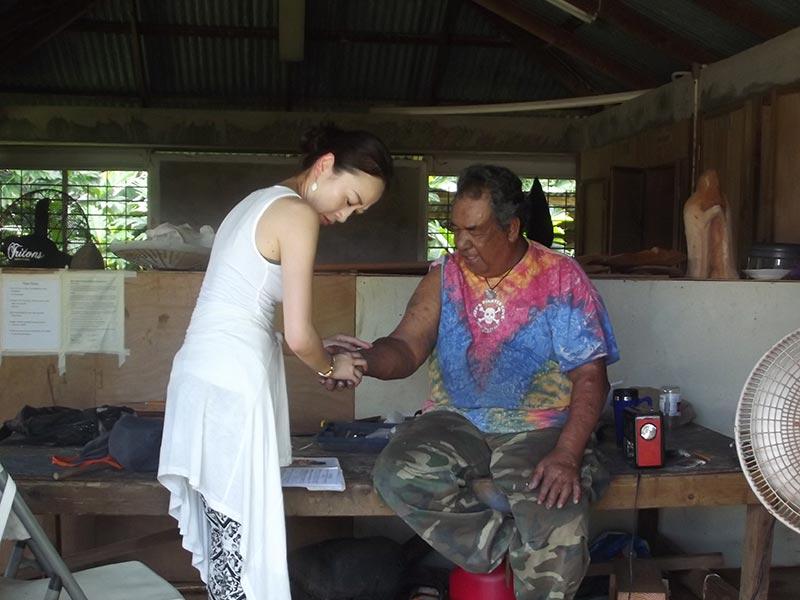Tulane professor combines love of dermatology and public health to treat neglected tropical diseases

Dr. Rie Yotsu, an associate professor at the School of Public Health and Tropical Medicine, has followed a career path that has proved unexpected yet fulfilling. She did not initially set out to become a dermatologist specializing in tropical medicine, but fate, she argues, led her to it. Her research revolves around skin-related neglected tropical diseases, or skin NTDs, a group of diseases common in low-income populations in tropical regions with symptoms that affect the skin.
After volunteering as a doctor in Ghana, Yostu found that she could combine a love of dermatology and public health. Although initially interested in general surgery because of the practical skills she thought could be of help, she realized that dermatology was something she could do anywhere to provide aid.
“One thing I really like about dermatology is that we can work with little to no equipment in resource-limited settings,” Yotsu said. “I came to the understanding that the knowledge is the skills.”
In many of the countries where Yotsu works, the presence of dermatologists is a rarity.
“I know all the dermatologists in Malawi,” Yotsu said, “because they only have two.” After a moment, she added, “There’s one more coming up. She’s in training, so there will be three, but I know her, too!” Hoping to fill these gaps, she is focusing her research on providing better diagnostic tools and treatment and better access to dermatological care through technology like telehealth.
Yotsu’s work has predominantly been focused on caring for and studying Hansen’s disease, also known as leprosy.
“That’s my first passion,” she said. She has worked in Japanese leprosaria, or leprosy hospitals, and in disease control programs globally. Yotsu also views the fact that her work brought her to Louisiana, a region with a rich history associated with the disease, as fateful. Carville, Louisiana, was the site of a hospital for victims of Hansen’s disease from 1894 until 1999, and the National Hansen’s Disease Program is still operating in Baton Rouge.
In fact, the first medication for treating Hansen’s disease was used at Carville beginning in 1941. This medication, called promin, was shown to be effective in combating Mycobacterium leprae, the bacteria responsible for causing leprosy. A version of promin is still used today in conjunction with two other medications.
“Although they are effective to a certain degree, we need to really think about new alternative treatments. We’ve been using the same medication since the 1940s,” said Yotsu. For all we know about this ancient disease, there is still so much to study.
Contrary to popular conceptions, Hansen’s disease is not highly contagious. Most of the population is not susceptible to the bacteria and does not develop clinical symptoms, but it remains a highly stigmatized disease.
Stigmatization is one of the major hurdles for people living with Hansen’s disease and other skin NTDs, given how visible the symptoms are and the complexity of how they are transmitted.
“I don’t think we can simply criticize people in the past for discriminating against these diseases,” Yotsu said. “I mean, it’s wrong, but I’m not really sure myself that I would have felt comfortable without knowing what we know now.”
Yotsu was a primary author for a World Health Organization guidance on integration of skin NTDs that came out earlier this year, which suggested ways to combat multiple conditions at once in communities. Treating these conditions requires more than just getting medications to the people affected. She stresses the importance of education on a community level on topics like hygiene and caring for wounds. “There are so many ways they can get the treatment at or near their homes. You can train them on how to take care of the wounds and educate the family to support this patient. These efforts can simultaneously address multiple skin NTDs.”
It is also important to educate the public about skin NTDs in order to fight the stigmatization. “We also need to raise awareness among the communities that this disease is not highly infectious,” Yotsu said, “and you don’t need to be afraid of this disease.”
